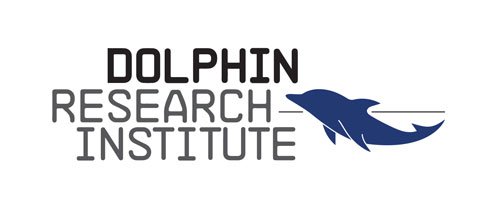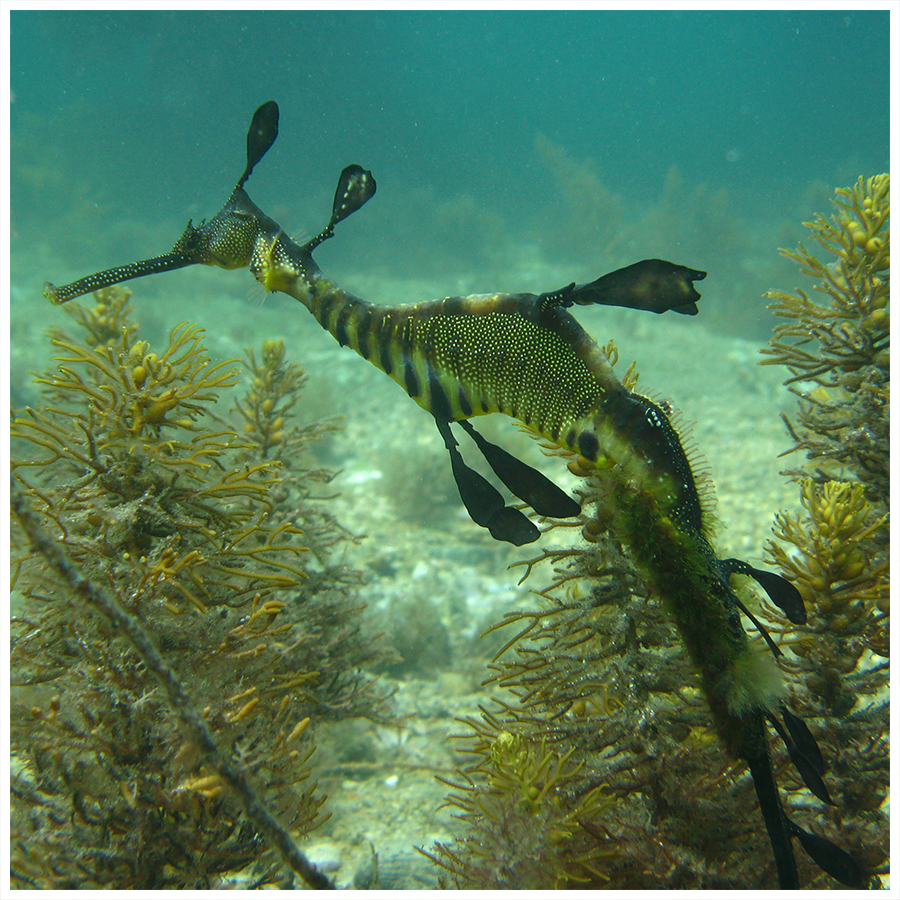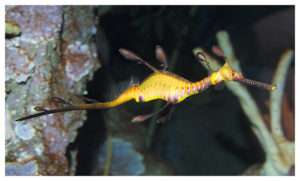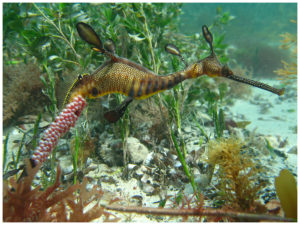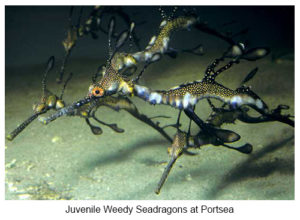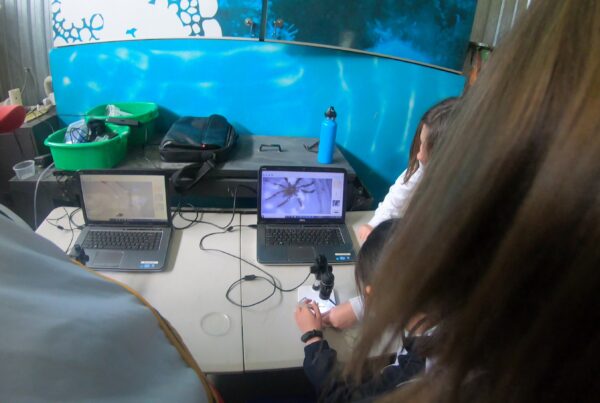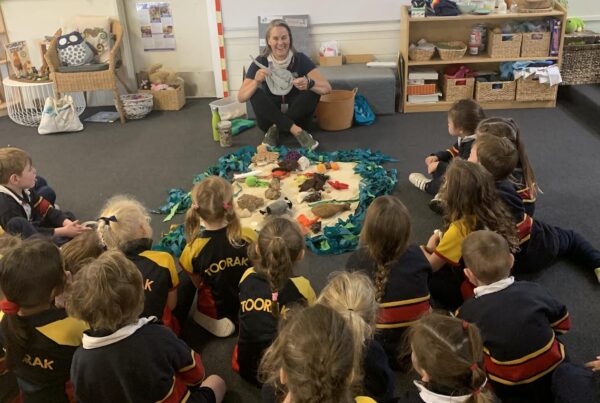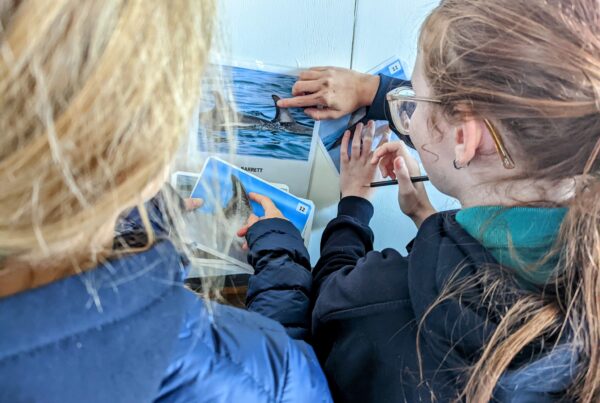This fish is the amazing Weedy or Common seadragon and yes, it is a fish. It is a relative of seahorses and pipe fish. This amazing animal was chosen, by public ballot in 2002, to be the marine emblem of Victoria. They are not only found in Victoria, they live on reefs and seagrass beds from Geraldton in WA to Port Stephens in NSW, but nowhere else on the planet.
Seadragons are long slender animals, reaching up to 45cm in length. Their head has several spines, a long snout, and two large eyes. They have no teeth, instead, they use powerful suction to draw water and food into their mouths. Their diet consists of plankton, fish larvae, and small crustaceans.
Unlike other seahorses, their long tail can not wrap around or grip objects. Where other seahorses can attach themselves to solid objects to avoid the surging water Weedy seadragons simply drift back and forth with each surge. They have a long dorsal fin and smaller pectoral fins near their head which they use to swim, but they are not fast or strong swimmers.
If you see these animals swimming in open water, you could be excused for thinking that they look odd. Such a long body with many leaf-shaped appendages extending from it. A body that is reddish-brown with lots of yellow dots and purple stripes. Surely a slow swimming animal like this would be easily spotted by predators? In open water maybe, but in amongst the seagrass and seaweed, it is much harder to see. Their vertical body mimics the stems of seaweed and the leafy appendages aid their camouflage.
A fun fact about the yellow dots on the side of their body. Researchers have found that each animal has their own unique pattern and are using photos of Weedy seadragons to identify individuals and track populations.
Reproduction starts with the males courting the females, a process that may take 2-4 weeks and involves prolonged dances and gestures. Their bodies change as the time of breeding draws near. The female’s body swells with the developing eggs and the underside of the male’s tail, his brood patch, becomes swollen and reddens.
When her eggs are ready the female transfers up to 300 bright pink, spherical eggs, onto the male’s tail where he fertilizes them. Initially, they are attached by a mucus coating but over time the brood patch develops cups around each egg. He will carry the eggs for the next 8 weeks.
The eggs hatch over a period of a few days with the emerging young still attached to their yolk sac. The hatchlings are 2.5-3.5 centimetres long and the yolk will nourish them until the snout is fully developed and they can feed. The juveniles grow rapidly, doubling in length in the first week and reaching around 15 centimetres after 14 weeks.
Watch a couple’s courtship and the birth of their offspring. These images are remarkable. YouTube Video: https://www.youtube.com/watch?v=9MKkr_1Kqcw
If you would like to learn more about the huge diversity of life that can be found along our coasts and shorelines, please contact Education Director Mandy Robertson on education@dolphinresearch.org.au for a public event, school holiday program, or school incursion/excursion.
